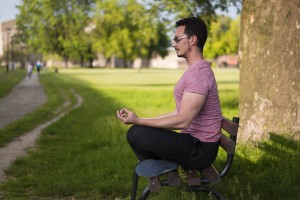Meditation is a powerful practice.
It can enable you to relax physically and mentally and engage with your spirituality. It also can have many general health benefits.
Chi meditation is a form of meditation that relaxes your body, mind, and spirit by focusing on the unity of the universe. Anyone who is interested in meditation or an avid practitioner can practice chi.
Learn more about what you need to know about this style of meditation, and consider beginning your practice today.
What You Need to Know About Chi Meditation
“Chi” indicates the energy of the entire universe.
Chi refers to the entire energy of the universe or nature. It is the summation of all forces within what we call and know as life. It is a foundational aspect of Chinese culture and practices, although it is also present in other cultures.
In India, for example, chi is known as prana. In Native American culture, chi is the same as ki.
When one begins a chi meditation, h/she intends to achieve spiritual awareness through intense focus on accessing chi. H/she fixates the mind and spirit on the connection between all aspects of life: mind, body, and spirit. A meditation practice attempts to access the universal energy that moves and binds all of us.
Chi healers harness chi energy to assist patients in their journeys toward psychological and physical well-being. Individuals can also harness this energy on their own to increase strength and vibrancy.
A chi practice can involve moving or sitting.
The wonderful thing about chi is that it can be applied to a variety of practices, both moving and sitting.
A sitting practice is just like a general sitting meditation. Practitioners may consider sitting on a cushion or against a wall for better comfort. Although there are many different techniques of a sitting practice, a common one involves moving the physical and mental awareness to fixed points in order to gradually access entire chi.
During a sitting practice, you may encounter different forms of energies, or experience visions of color or movement when you close your eyes. It is important to remain present through all of these experiences.
Tai chi is a martial arts form of moving chi, in which individuals match their mental meditation with fluid movement. Many tai chi poses involve balance and some flexibility. Tai chi enables individuals to experience the life and movements of their bodies intensely and presently.
Whether sitting or moving, chi still has the same focus: accessing chi through thoughtful focus and opening of the mind and body.
Chi can provide a variety of health benefits.
Meditation alone plays an enormous role in general stress reduction, but it also can assist with depression, anxiety, high blood pressure, eating disorders, and cellular well-being. When practicing chi, one is sure to reap the benefits of meditation at a higher level.
As a sitting practice, chi generally involves a meditation of unity and connection with the universal wellspring of energy. This centering and honing of the spiritual and mental focus relaxes the body and mind and may even enable spiritual awakening.
Tai chi, a moving meditation, brings in a host of physical health benefits as well. It improves balance, reduces depression, and promotes serenity in the mind and body. Tai chi also increases one’s flexibility and lowers blood pressure.
Your meditation practice is always beautifully unique.
No practice will ever be the same when it comes to chi. It will differ from practice to practice and will always be a different experience for each individual.
Keep this in mind if you are considering practicing chi. Your practice is entirely your own. The more you open your mind to receive the chi, the more you may experience. These experiences are unique to you alone.
You may notice that as you consistently practice, it becomes easier to access the chi. You may also notice some days when it is very difficult, and you feel like a beginner. Each practice is unique to you, which is what makes it a journey.
There is no goal of chi meditation–only intention.
As with any meditation practice, there is no goal or endpoint. There is no “pass” or “fail;” no grade is achieved. This is very unlike other physical or mental activities in our culture that measure success in terms of reaching a goal or not.
It is important to keep this in mind when beginning and practicing a chi meditation. Remind yourself that your intention to practice is enough to carry you through it. The more you open yourself during your practice to the energy of the universe (chi), the greater the ease with which you’ll access this energy.
If there is no endpoint, you may ask, when do I stop?
The answer is that it is up to you when to finish your chi practice. Sometimes it will be evident to you during your meditation, either because you feel you have received the energetic connection you’ve attempted to access, or because you feel ready to leave the practice.
It can be helpful to set a timer if you are new to meditation of any kind, or consider joining a group of friends to practice together. Sometimes a local dharma center may provide guided chi meditations.
Chi meditation can be paired successfully with other spiritual practices.
One of the great things about meditation is that it is a flexible practice. Anyone can implement it at any time, no matter their background or routine, and use it as a supplementary practice to other things in their life.
Pairing your chi practice with other spiritual practices can provide a wonderful way to deepen self-awareness, reduce stress, and gain an understanding of your life and journey. You may also want to investigate yoga, psychic counsel, or other forms of meditation.
If you are unsure about how chi can guide your overall spiritual practice, seek assistance from a professional guide. Or simply begin your practice today and discover where it leads you. There is no end to the spiritual abundance a chi practice provides!


Speak Your Mind